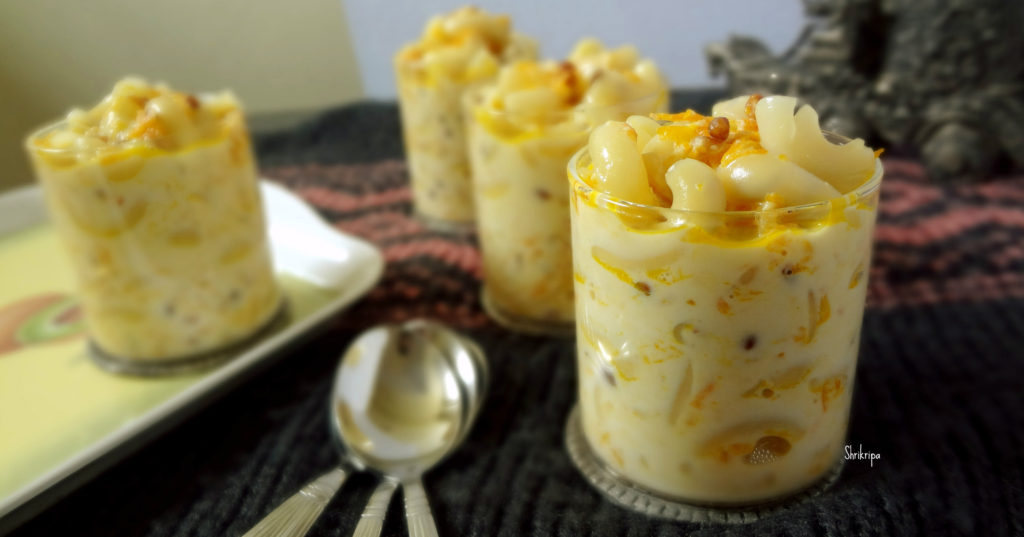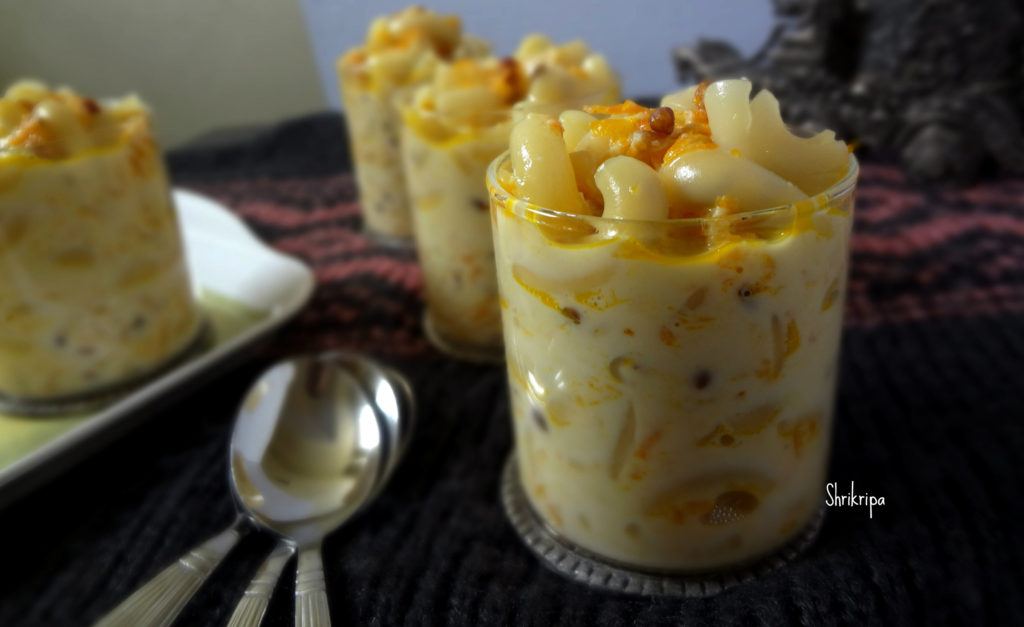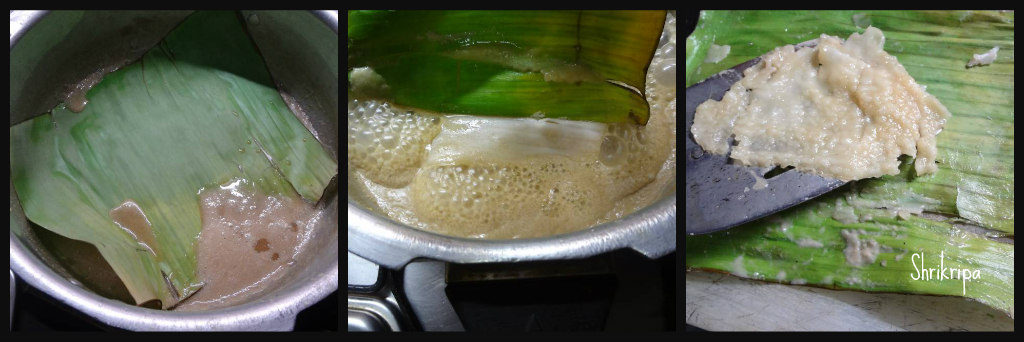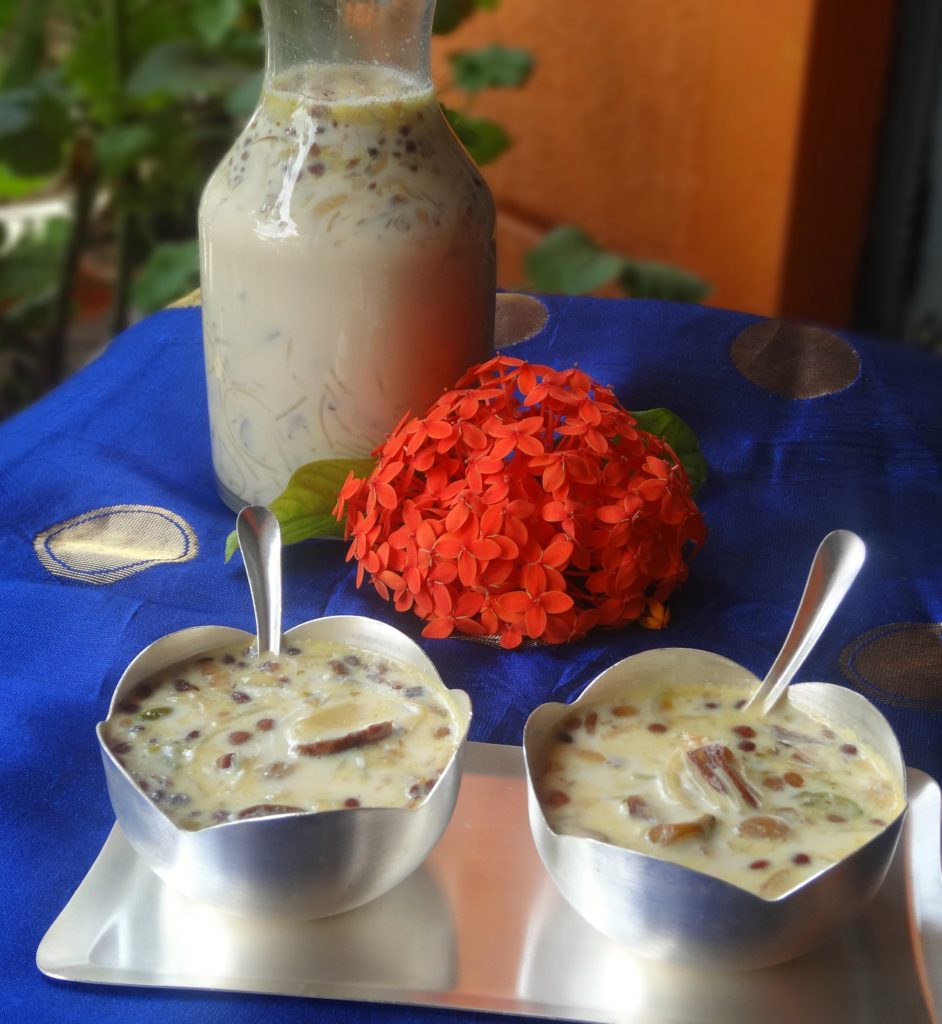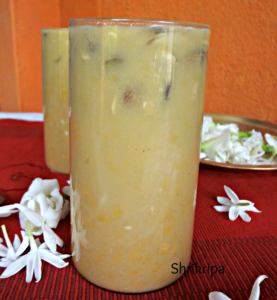First, I want to wish a very very happy “Krishna Janmashtami” to all my readers. On the eve of this festival I made our traditional payasam and enjoyed with my family.
“Berati” is nothing but preserved jackfruit pulp, which is cooked until it forms into thick mass and usually made during Jack fruit season and stored for future use.
How to preserve jackfruit / Berati is already shared in my blog and it is here .
In Coastal region we love jack in many forms. Berati Payasa is one of them.
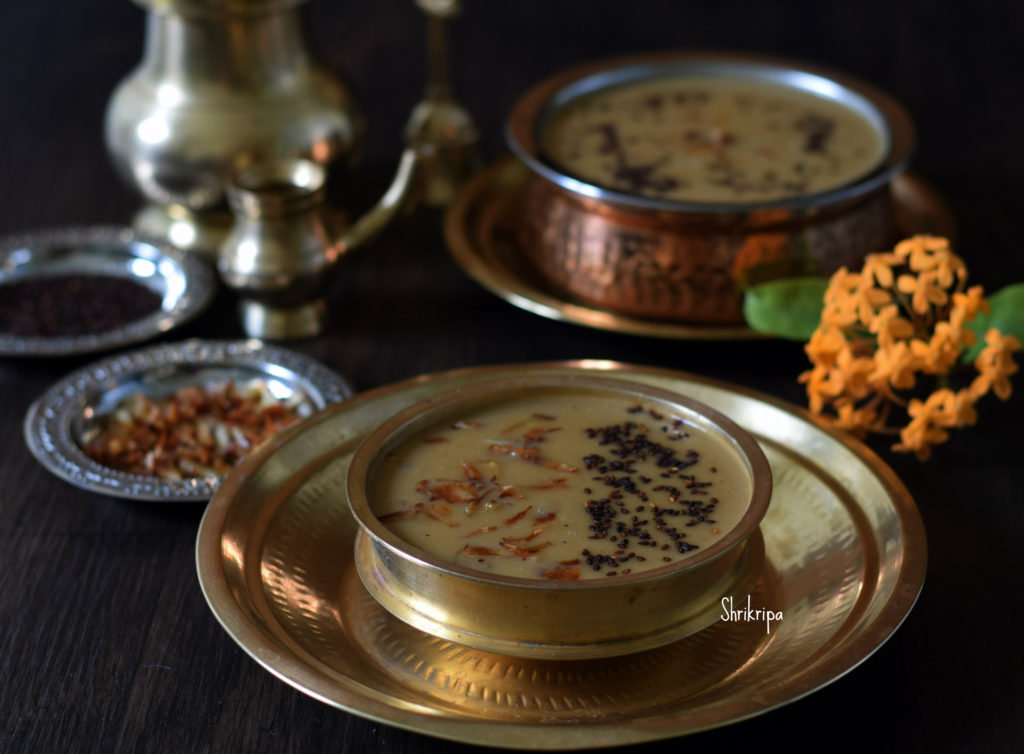
Now we will see traditionally how it is made:
Ingredients:
Berati / jackfruit preserve – 1 bowl
Coconut – 1 (To extract milk)
-OR-
Thin coconut milk – 2cups
Thick coconut milk – ½ cup
Jaggery – to taste
Salt – ½ tsp
Cardamom powder – ½ tsp
For Seasoning:
Ghee – 1 tbl sp
Thin Coconut slices – 2 tbl sp
Cashew pieces – 2 tbl sp
OR
Toasted black sesame – 1 table spoon
Fresh coconut slices – 1 to 2 table spoons
Method:
- Take out Berati from your freezer and keep aside for some time to attain room temperature.
- Slice coconut by using small knife, chop these sliced pieces into small bits.

- Toast black sesame and keep aside.
- Take little ghee and fry coconut bits and keep aside.

- If you want to, you can add ghee roasted cashew bits as well.
- Grate coconut (coconut should be fresh), put one cup of water and grind this in a mixer jar and extract milk by sieving this ground mixture.
- This is thick coconut milk and you should keep this separately. We use this at the end stage of Payasa making.
- Do this procedure a couple of times to get a thin extract and lastly discard coconut fibre.
- If you are using readymade coconut milk, please skip this step.
- Now take one thick bottomed vessel, put Berati, thin coconut milk and dissolve Berati and keep this on a gas stove to boil.

- Usually while making Berati, we put little jaggery, so add required amount of jaggery and boil until raw smell of the jaggery vanishes.
- Lastly add thick extract of coconut milk and give one boil. Don’t boil it much. Add Cardamom powder and mix.

- Remove from fire and add fried coconut pieces, toasted black sesame or cashew brittles to prepared Payasa.
- Serve with lunch thali or as a dessert.
NOTE:

- Traditionally only toasted sesame and coconut bits are added.

